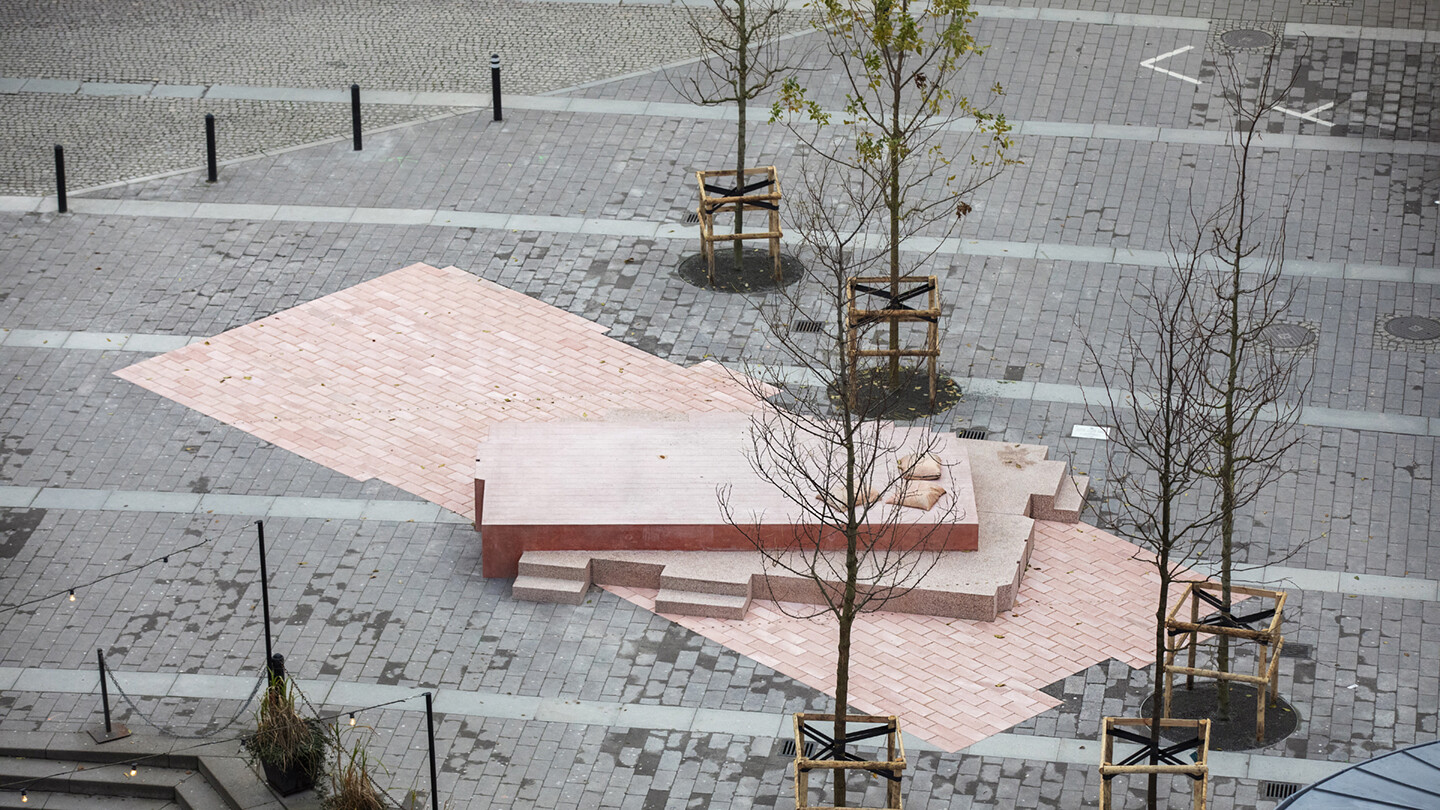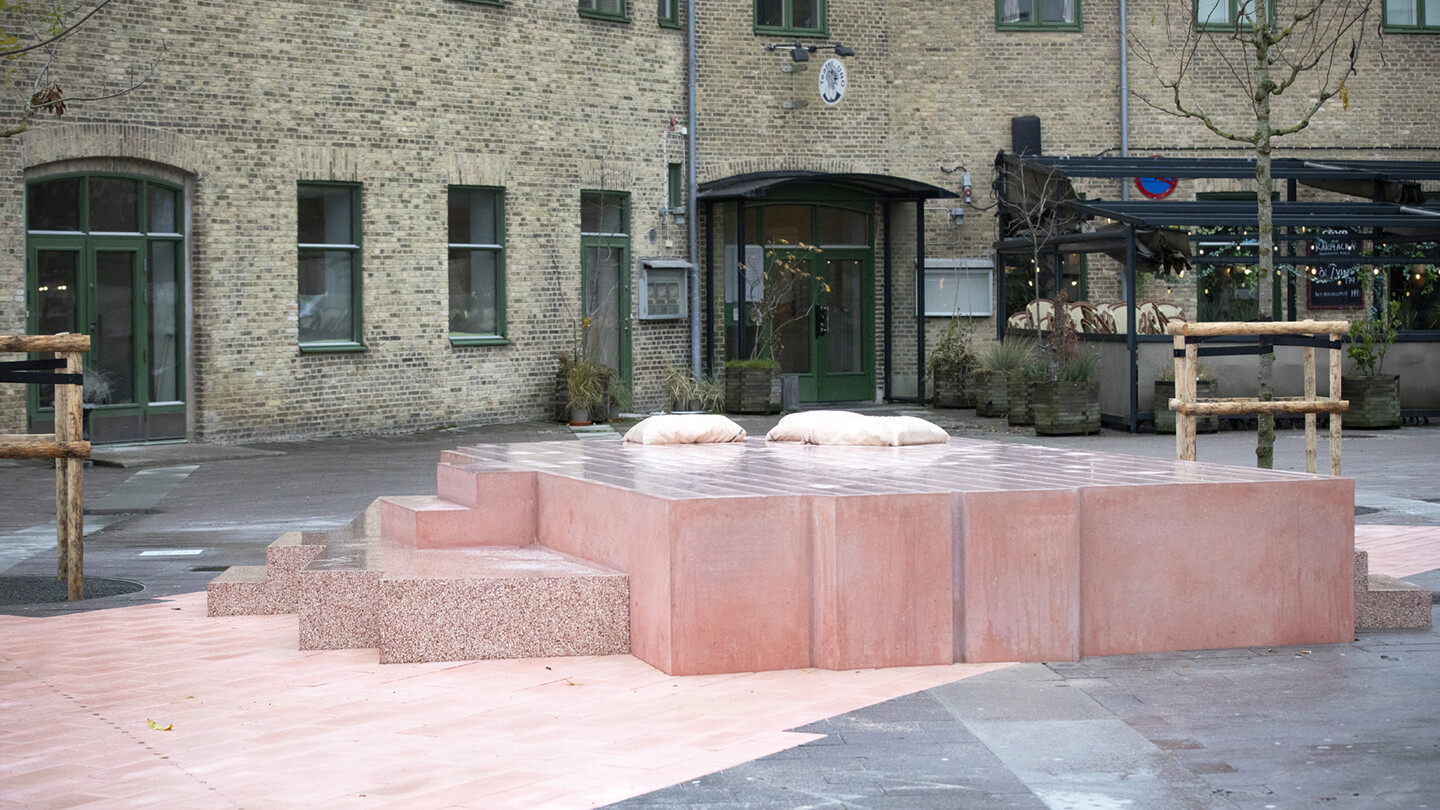Sweden’s first LGBTQI+ monument
At the end of 2023, Sweden’s first LGBTQI+ monument Gläntan, or “The Glade”, was inaugurated. It is located on Esperantoplatsen in central Gothenburg and was created by artist Conny Karlsson Lundgren. It is meant to remind people of the struggle for the rights of LGBTQI+ people: today, in the past and in the future. The public artwork is meant to serve as a place to meet, remember, mourn, dream and manifest.
The monument is made up of several parts that reflect different times and places. It is based on shared common experiences from Gothenburg’s LGBTQI+ history.
“A polyphony of voices, lived realities, experiences, needs and desires will share a space here. For me, the artwork reflects the multitude of voices and the collective processes that have led to this,” says Conny Karlsson Lundgren.
Multi-layered spaces
In the middle are three pink layers in stone/concrete that can be used as a meeting place and a stage. Each layer represents a space from Gothenburg’s LGBTQI+ history. None of the spaces remain today, but they are all depicted according to their original 1:1 scale floor plans.
The dance floor
The pink paving stones show the layout of the dance floor of the Touch nightclub on Esperantoplatsen in the 80s and 90s. The nightclub, situated in the same building as the non-profit Swedish Federation for LGBTQI rights, was bustling with visitors, and many social meetings and contacts were formed here over the years.
The building also housed the organization’s café, bookstore and library, and was central to its efforts to prevent the spread of HIV and AIDS.
The kitchen
The middle layer shows the layout of the kitchen in the feminist collective “Högst upp”, or “At the top”. The collective was housed in an apartment in Gothenburg from the 1970s until 2017.
Known for its openness, the collective had women, lesbians, queer feminists and trans people as residents and visitors over the years. One of the bathrooms contained the collective’s notebooks, which became an open archive. The kitchen was the hub where parties, political meetings and other gatherings took place.
The bedroom
The top layer shows the bedroom of “Josefin”, whose home was one of several secret meeting places for gay men before homosexual acts were decriminalized in Sweden in 1944. The community at “Josefin” revolved around sharing experiences, desires, and stories, listening to music and dancing together.
Several of those visiting “Josefin” had fluid gender identities and referred to each other by female-coded names.
The pillows
On top of the uppermost layer are three pillows made of pink marble. The pillows are depictions of real pillows of contemporary LGBTQI+ people, a reminder of all the private lives and intimate desires that have been exposed and turned into politics in the fight for equal rights.
“For many of us who are part of the communities that make up the shimmering LGBTQI+ spectrum, this is the lowest common denominator,” says Conny Karlsson Lundgren.
Gläntan—The Glade
The entire location is framed by trees which, as they grow, will enhance the intimacy of the glade. This mirrors the numerous parks and areas within the city that has provided alternative spaces to express desires.
The movement
Across the ground is a dotted brass line that symbolizes the route of the march for equal rights during the 1981 Gothenburg Liberation Weekend. The line ends where it begins.
“The line signifies an understanding of time as both labyrinthine and circular: that the struggle doesn’t end.”
Listen to Conny Karlsson Lundgren talk about the artwork (six minutes/english subtitles).
Conny Karlsson Lundgren holds an MFA from Valand Academy of Fine Arts. His art is created through interdisciplinary methods and explores the boundaries between social, political and private identity.
The artwork was financed by the Charles Felix Lindberg Donation Fund of the City of Gothenburg.







